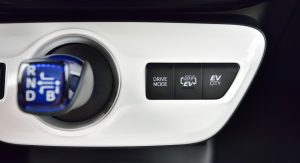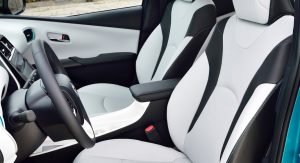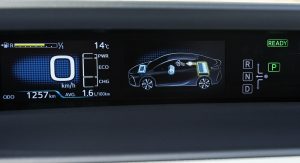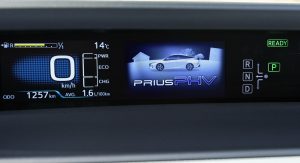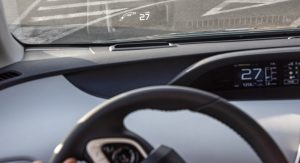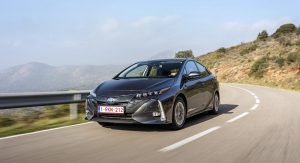The new Toyota Prius Plug-In Hybrid arrives in Europe and the company released the full details on its latest eco-friendly model.
Instead of retaining the characteristic and rather divisive looks of the ‘normal’ Prius, the Japanese company opted for a different design which gives the Prius PHEV a character of its own.
There’s no denying that the new addition in the Prius family will be a head turner but whether that’s good or not comes down to personal preferences. We must notice though that the new styling gives the Prius PHEV a very slippery drag coefficient of 0.25.
The numbers accompanying the new model continue to impress with some frankly ridiculous claims on the fuel economy and emissions department, with the company saying that the Prius PHEV returns a combined 1.0lt/100km (282mpg UK) and just 22g/km of CO2 emissions, according to the NEDC cycle.
The plug-in hybrid powertrain is backed up by a 8.8kWh battery pack, which can be fully charged in just over 3 hours from a standard household socket or in 2 hours using a fast charger. The 1.8-litre petrol engine combined with the electric motor continue to offer 120hp, enabling the Prius Plug-In Hybrid to achieve a 0-100km/h (0-62mph) in 11.1 and reach a top speed of 162km/h (100mph). All-electric range is over 50km (31 miles), while the top speed in EV mode is limited to 135km/h (84mph).
There are four powertrain modes to choose from: HV Mode, EV Mode, EV City and a new Battery Charge mode. Additionally, the new Toyota Prius PHEV also gets three driving modes: Normal, Power and Eco.
Toyota has also made some model-specific changes to the suspension from the regular Prius, with the springs and dampers optimized for better ride quality and stability, plus a bigger by 13 percent front stabilizer for less roll and greater handling.
The roof host a solar panel which generates electricity to charge the battery pack and helps increase the daily driving range of the Prius PHEV by up to 5km (3 miles). Also the tailgate is made out of Carbon Fiber Reinforced Plastic (CFRP) -a first for a mass production vehicle, according to Toyota- to reduce weight.
The company also increased the amount of sound deadening in the Prius PHEV to further reduce the NVH levels, by installing an acoustic front glass, urethane fender separators and bonnet side seals to suppress the engine noise out of the cabin.
Unlike the tablet-like 11.6inch infotainment system that equips cars destined for the US and Japan, European customers will only get the option of an eight-inch option with updated graphics, along with dual 4.2-inch screens in front of the driver.
Other features include wireless charging, a colored head-up display, a new Simple Intelligent Parking Assist (S-IPA) system, and an enhanced Toyota Safety Sense system which now comes with Pre-Collision Safety with pedestrian recognition and a Full-Speed Adaptive Cruise Control.



![Toyota Details New Prius Plug-In Hybrid For European Customers [100 Pics]](https://www.carscoops.com/wp-content/uploads/2023/06/ForCarscoops-1024x683.jpg)
![Toyota Details New Prius Plug-In Hybrid For European Customers [100 Pics]](https://www.carscoops.com/wp-content/uploads/2017/02/OPEN-3.jpg)











































